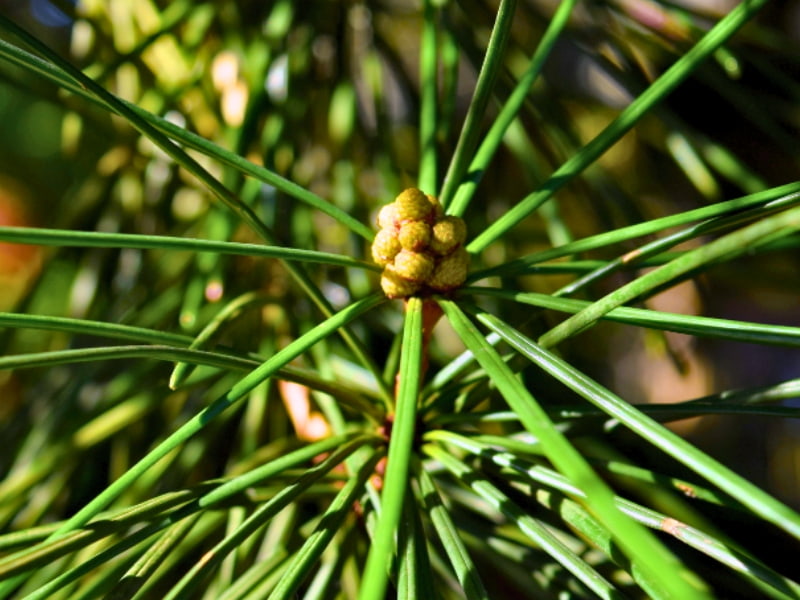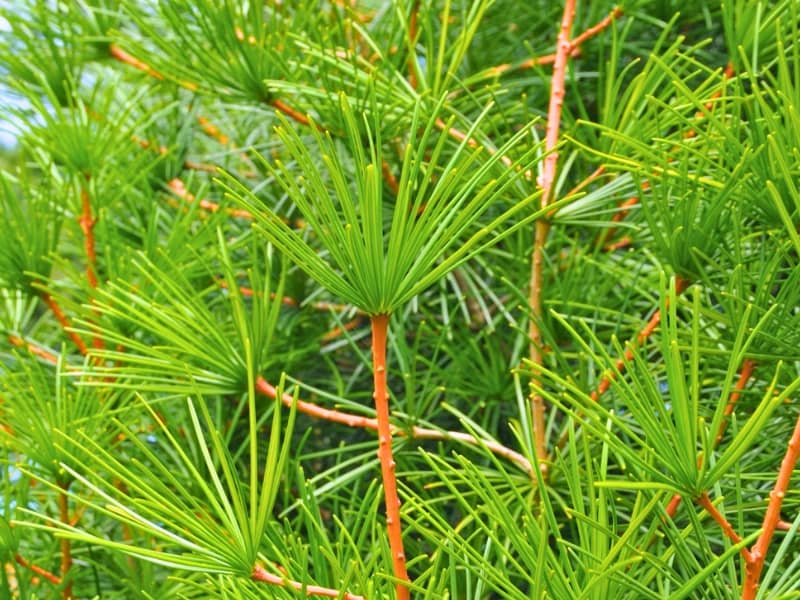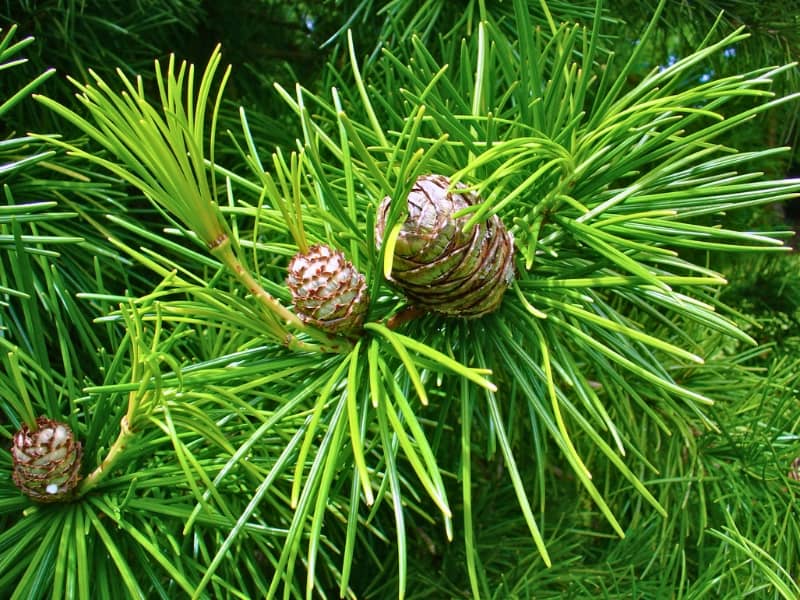The Japanese Umbrella Pine, also commonly known as Umbrella Pine, or by its botanical name Sciadopitys verticillata, is a truly remarkable and ancient conifer. This needled evergreen is a living fossil, representing the sole member of its family. At Gardencenterpoint.com, we appreciate the unique charm and captivating history of this tree.
This comprehensive guide will delve into everything you need to know about the Japanese Umbrella Pine, from its unique characteristics and care requirements to its fascinating history. We’ll explore topics like Japanese umbrella pine size, optimal growing conditions, and even how to cultivate it as a Japanese Umbrella Pine bonsai. Continue reading to unlock the secrets of this exceptional tree and discover if it’s the perfect addition to your landscape. Later in the article, you’ll find detailed instructions on growing a Japanese Umbrella Pine in a container, offering a versatile option for smaller spaces or patios.

What is a Japanese Umbrella Pine? Understanding Its Unique Characteristics
The Japanese Umbrella Pine stands apart from other conifers. Its most distinctive feature is its whorls of long, thick, green needles that radiate outwards like the spokes of an umbrella, hence its common name. These “needles” are actually cladodes – flattened, modified stems that function like leaves. This unusual characteristic gives the tree a unique textural appearance, unlike any other pine or conifer.
| Common name | Japanese Umbrella Pine, Umbrella Pine |
| Botanical name | Sciadopitys verticillata |
| Family | Sciadopityaceae |
| Genus | Sciadopitys |
| Species | verticillata |
| Origin | Japan |
| Native | Japan |
| Life cycle | Perennial |
| Plant type | Conifer, Evergreen |
| Hardiness zone | 5, 6, 7, 8 (and potentially 4 with protection) |
| Sunlight | Full Sun to Partial Shade (afternoon shade preferred in hotter climates) |
| Maintenance | Low |
| Water | Moderate (prefers consistent moisture, especially when young) |
| Drainage | Well-Drained |
| Soil pH | Acidic (5.0-6.5) |
| Spacing | 15-20 ft. (at maturity) |
| Flowering period | Non-flowering (produces cones) |
| Cone Description | Oval Cones, 2-4 inches, take two years to mature. |
| Height | 25-40 ft. (potentially taller in ideal conditions over many decades) |
| Width | 15-20 ft. |
| Growth rate | Slow |
| Foliage color | Green (year-round) |
| Needle Description | Unique Cladodes (flattened Stems) |
| Bark color | Reddish-brown, peeling |
| Bark Description | Exfoliating bark |
| Deer Resistance | Yes (generally resistant) |
| Pest/Disease Issues | Generally resistant; occasional scale, spider mites, or root rot (in poorly drained soils) |
| Garden style | Asian-inspired Garden, Conifer Collection, Specimen Planting, Rock Garden, Woodland Garden |
| Uses | Specimen Tree, Container Plant, Bonsai, Accent Plant |
| Propagation | Seed (slow), Cuttings (challenging), Grafting |
| Toxicity | Non-toxic to humans and pets |
| Outstanding Feature | Unique needle arrangement, ancient lineage |
The tree’s slow growth, eventually reaching a mature height of 25-40 feet, contributes to its elegant, pyramidal shape. The bark is reddish-brown and peels off in long strips, adding further visual interest. This slow Japanese umbrella pine growth rate makes it a manageable choice for many gardens, unlike faster-growing evergreens that can quickly outgrow their space.
Here’s a table summarizing some key characteristics:
| Feature | Description |
| Growth Habit | Pyramidal, slow-growing |
| Needles | Cladodes (modified stems), 2-5 inches long, arranged in whorls |
| Bark | Reddish-brown, peeling |
| Cones | Oval, 2-4 inches long, taking two years to mature |

Origin and History: A Living Fossil
The Japanese Umbrella Pine is not just visually unique; it has a remarkable evolutionary history. Fossil records indicate that the Sciadopitys genus dates back over 200 million years, making it a true living fossil. It once had a wider distribution across the Northern Hemisphere, but today it is only found naturally in the cool, moist forests of Japan. This ancient lineage is a testament to the tree’s resilience and adaptability.
In Japan, the tree is considered sacred and is often found near temples and shrines. It is also one of the Five Sacred Trees of Kiso, traditionally protected and revered. The wood is valued for its water resistance and has been used in boat building and other applications.
Why Choose a Japanese Umbrella Pine? Benefits and Considerations
Before adding a Japanese Umbrella Pine to your landscape, it’s important to weigh its benefits and consider its specific needs.
Benefits:
- Unique Appearance: Its unusual needle arrangement and pyramidal shape create a striking focal point in any garden.
- Slow Growth: Its slow growth rate makes it a manageable tree for smaller spaces and reduces the need for frequent pruning.
- Year-Round Interest: The evergreen foliage provides color and texture throughout the year, even in winter.
- Low Maintenance: Once established, it requires minimal care and is generally resistant to pests and diseases.
- Deer Resistant: Deer typically avoid browsing on this tree, making it a good choice for areas with deer pressure.
- Historical Significance: Owning a Japanese Umbrella Pine is like having a piece of living history in your garden.
Considerations:
- Slow Growth: While its slow growth is a benefit for some, it also means it will take many years to reach a substantial size.
- Specific Soil Needs: It requires well-drained, slightly acidic soil. Alkaline or poorly drained soils can lead to problems.
- Sunlight Requirements: It prefers full sun but appreciates afternoon shade in hotter climates to prevent needle burn.
- Cost: Due to its slow growth and relative rarity, Japanese Umbrella Pines can be more expensive than other conifers.
- Limited Availability: Finding a specimen, especially a larger one, may require searching at specialized nurseries or online retailers.
Cultivating Your Japanese Umbrella Pine: A Step-by-Step Guide
Growing a healthy and thriving Japanese Umbrella Pine requires careful attention to its specific needs. Here’s a detailed guide to planting and caring for this unique tree:
1. Choosing the Right Location:
- Sunlight: Select a location that receives full sun (at least 6 hours of direct sunlight per day) to partial shade. In hotter climates (Zones 7-8), afternoon shade is crucial to prevent needle scorch.
- Soil: The soil must be well-drained and slightly acidic (pH 5.0-6.5). Amend heavy clay soils with organic matter, such as compost or peat moss, to improve drainage and aeration. A soil test is recommended to determine the pH and nutrient levels.
- Space: Consider the mature size of the tree (25-40 feet tall and 15-20 feet wide) and choose a location that allows for adequate growth without overcrowding.
- Protection: Young trees benefit from protection from strong winds, especially in colder climates.
2. Planting Your Japanese Umbrella Pine:
- Timing: The best time to plant is in the spring or fall, when the weather is cool and moist.
- Digging the Hole: Dig a hole that is twice as wide as the root ball and just as deep.
- Preparing the Root Ball: Gently loosen any circling roots around the edge of the root ball. If the tree is pot-bound, carefully make a few vertical cuts along the sides of the root ball to encourage outward root growth.
- Planting: Place the tree in the hole, ensuring that the top of the root ball is level with or slightly above the surrounding soil. Backfill the hole with the amended soil, gently firming it around the roots.
- Watering: Water thoroughly after planting to settle the soil and eliminate air pockets.
3. Watering and Fertilizing:
- Watering: Young trees require regular watering, especially during dry periods. Maintain consistently moist soil, but avoid overwatering, which can lead to root rot. Once established, the tree is relatively drought-tolerant, but supplemental watering may be needed during prolonged dry spells.
- Fertilizing: Japanese Umbrella Pines are not heavy feeders. A light application of a balanced, slow-release fertilizer formulated for acid-loving plants in early spring is usually sufficient. Avoid over-fertilizing, which can damage the roots.
4. Mulching:
Apply a 2-3 inch layer of organic mulch, such as pine bark or wood chips, around the base of the tree. Mulch helps to retain moisture, suppress weeds, and regulate soil temperature. Keep the mulch a few inches away from the trunk to prevent rot.
5. Pruning:
Japanese Umbrella Pines require minimal pruning. Remove any dead, damaged, or crossing branches in late winter or early spring. Avoid heavy pruning, as it can disrupt the tree’s natural shape. If you need to reduce the size of the tree, prune lightly and gradually over several years.
6. Pest and Disease Management:
This tree is generally resistant to serious pests and diseases. However, it can occasionally be affected by:
- Scale Insects: These small, sap-sucking insects can cause yellowing needles and stunted growth. Treat infestations with horticultural oil or insecticidal soap.
- Spider Mites: These tiny pests can cause stippling and discoloration of the needles. They thrive in hot, dry conditions. Increase humidity and consider using a miticide if necessary.
- Root Rot: This fungal disease occurs in poorly drained soils. Ensure proper drainage and avoid overwatering to prevent root rot.
Regularly inspect your tree for any signs of pests or diseases and take prompt action if necessary.

Growing a Japanese Umbrella Pine in a Container (Potting)
Japanese Umbrella Pine in container cultivation is an excellent option for those with limited space or who want to enjoy this unique tree on a patio or balcony. Here’s how to successfully grow a Japanese Umbrella Pine in a pot:
1. Choosing the Right Container:
- Size: Select a pot that is at least 2-3 inches larger in diameter than the root ball. As the tree grows, you will need to repot it into progressively larger containers.
- Material: Choose a container made of a durable material, such as terra cotta, ceramic, or plastic. Ensure the pot has drainage holes to prevent waterlogging.
- Drainage: Excellent drainage is crucial. If the pot doesn’t have adequate drainage holes, drill additional ones.
2. Potting Mix:
Use a well-draining potting mix formulated for acid-loving plants. A mix containing peat moss, perlite, and composted bark is ideal. Avoid using garden soil, which can compact and impede drainage.
3. Planting:
Follow the same planting steps as for planting in the ground. Ensure the top of the root ball is level with or slightly above the surface of the potting mix.
4. Watering and Fertilizing (Container-Specific):
- Watering: Container-grown plants dry out more quickly than those in the ground. Water thoroughly when the top inch of soil feels dry to the touch. Monitor the soil moisture frequently, especially during hot weather.
- Fertilizing: Use a diluted, liquid fertilizer formulated for acid-loving plants every 2-4 weeks during the growing season (spring and summer). Reduce fertilization in the fall and winter.
5. Repotting:
Repot your Japanese Umbrella Pine every 2-3 years, or when the roots become pot-bound. Choose a pot that is 2-3 inches larger in diameter than the previous one. Gently loosen the roots and prune any circling roots before repotting.
6. Winter Protection (for colder climates):
In colder climates (Zones 4-5), container-grown Japanese Umbrella Pines need extra protection during the winter. Move the pot to a sheltered location, such as a garage or unheated porch. You can also wrap the pot with burlap or bubble wrap to insulate the roots.
Japanese Umbrella Pine Bonsai: The Art of Miniature Cultivation
The slow growth and unique foliage of the Japanese Umbrella Pine make it a popular choice for Japanese Umbrella Pine bonsai. Creating and maintaining a bonsai requires patience, skill, and an understanding of the tree’s needs.
1. Choosing a Bonsai Starter:
You can start a Japanese Umbrella Pine bonsai from seed, a cutting, or a young nursery plant. Starting from seed is a long-term project, taking many years to develop a substantial bonsai. Cuttings are a faster option, but they can be challenging to root. A young nursery plant is often the easiest and most practical way to begin.
2. Bonsai Potting Mix:
Use a well-draining bonsai soil mix that provides good aeration and moisture retention. A common mix consists of akadama (a type of clay granule), pumice, and lava rock.
3. Pruning and Wiring:
Pruning and wiring are essential techniques for shaping and styling a bonsai. Prune the branches and roots to maintain the desired size and shape. Use bonsai wire to gently guide the branches into the desired position. Remove the wire before it cuts into the bark.
4. Watering and Fertilizing (Bonsai-Specific):
- Watering: Bonsai trees require careful watering. Water thoroughly when the soil surface feels slightly dry. Avoid overwatering, which can lead to root rot. The frequency of watering will depend on the size of the pot, the type of soil, and the environmental conditions.
- Fertilizing: Use a diluted, liquid bonsai fertilizer every 2-4 weeks during the growing season. Reduce fertilization in the fall and winter.
5. Repotting (Bonsai):
Repot your Japanese Umbrella Pine bonsai every 2-5 years, depending on its growth rate and the size of the pot. Repotting helps to refresh the soil and prevent the roots from becoming pot-bound.
6. Overwintering (Bonsai):
Bonsai trees, especially those in small pots, are more vulnerable to cold temperatures than trees planted in the ground. Provide winter protection in colder climates.
Landscaping with Japanese Umbrella Pines: Design Ideas and Companion Plants
The Japanese Umbrella Pine’s unique form and texture make it a versatile addition to various landscape styles. Here are some design ideas and suitable companion plants:
Design Ideas:
- Specimen Tree: Plant it as a focal point in a lawn, courtyard, or rock garden. Its distinctive silhouette will draw the eye and create a sense of drama.
- Asian-Inspired Garden: Combine it with other Japanese plants, such as Japanese maples, azaleas, rhododendrons, and mosses, to create a serene and harmonious garden.
- Conifer Collection: Showcase its unique foliage alongside other conifers with contrasting textures and colors, such as blue spruces, golden junipers, and dwarf pines.
- Woodland Garden: Underplant it with shade-loving perennials, such as hostas, ferns, and hellebores, to create a natural and tranquil setting.
- Container Planting: Use it as a centerpiece in a large container, surrounded by smaller plants with complementary colors and textures.
Companion Plants:
- Japanese Maples (Acer palmatum): Their delicate foliage and vibrant fall colors provide a beautiful contrast to the Japanese Umbrella Pine’s evergreen needles.
- Azaleas and Rhododendrons: These acid-loving shrubs offer a burst of color in spring and prefer similar growing conditions.
- Hostas: Their broad leaves and varied colors and textures create a lush underplanting.
- Ferns: Their feathery fronds add a touch of elegance and softness to the landscape.
- Hellebores: These early-blooming perennials provide winter interest and thrive in shade.
- Dwarf Conifers: Choose dwarf conifers with contrasting colors and textures to create a visually appealing composition.
- Mosses Adds an element of a long standing and natural beauty.
Troubleshooting Common Problems with your Umbrella Pine
While the Japanese Umbrella Pine Sciadopitys verticillata is known for it’s overall lack of common problems, it’s good to be aware of the issues you might encounter.
- Needle Yellowing: This can be caused by several factors, including:
- Nutrient Deficiency: A lack of essential nutrients, especially iron, can cause yellowing needles. Conduct a soil test to determine if a nutrient deficiency exists.
- Overwatering or Poor Drainage: Soggy soil can suffocate the roots, leading to yellowing and needle drop.
- Sun Scorch: Intense sunlight, especially in hot climates, can cause the needles to turn yellow or brown.
- Pest Infestation: Scale insects or spider mites can cause yellowing needles.
- Needle Drop: Some needle drop is normal, especially in the fall. However, excessive needle drop can indicate a problem, such as:
- Drought Stress: Insufficient water can cause the tree to shed needles.
- Root Rot: Overwatering or poorly drained soil can lead to root rot, which can cause needle drop.
- Transplant Shock: Recently planted trees may experience some needle drop as they adjust to their new environment.
- Slow Growth: The Japanese Umbrella Pine is naturally slow-growing. However, excessively slow growth can be caused by:
- Poor Soil Conditions: Compacted, infertile, or alkaline soil can inhibit growth.
- Lack of Sunlight: Insufficient sunlight can reduce the tree’s growth rate.
- Nutrient Deficiency: A lack of essential nutrients can limit growth.

Leave a Reply